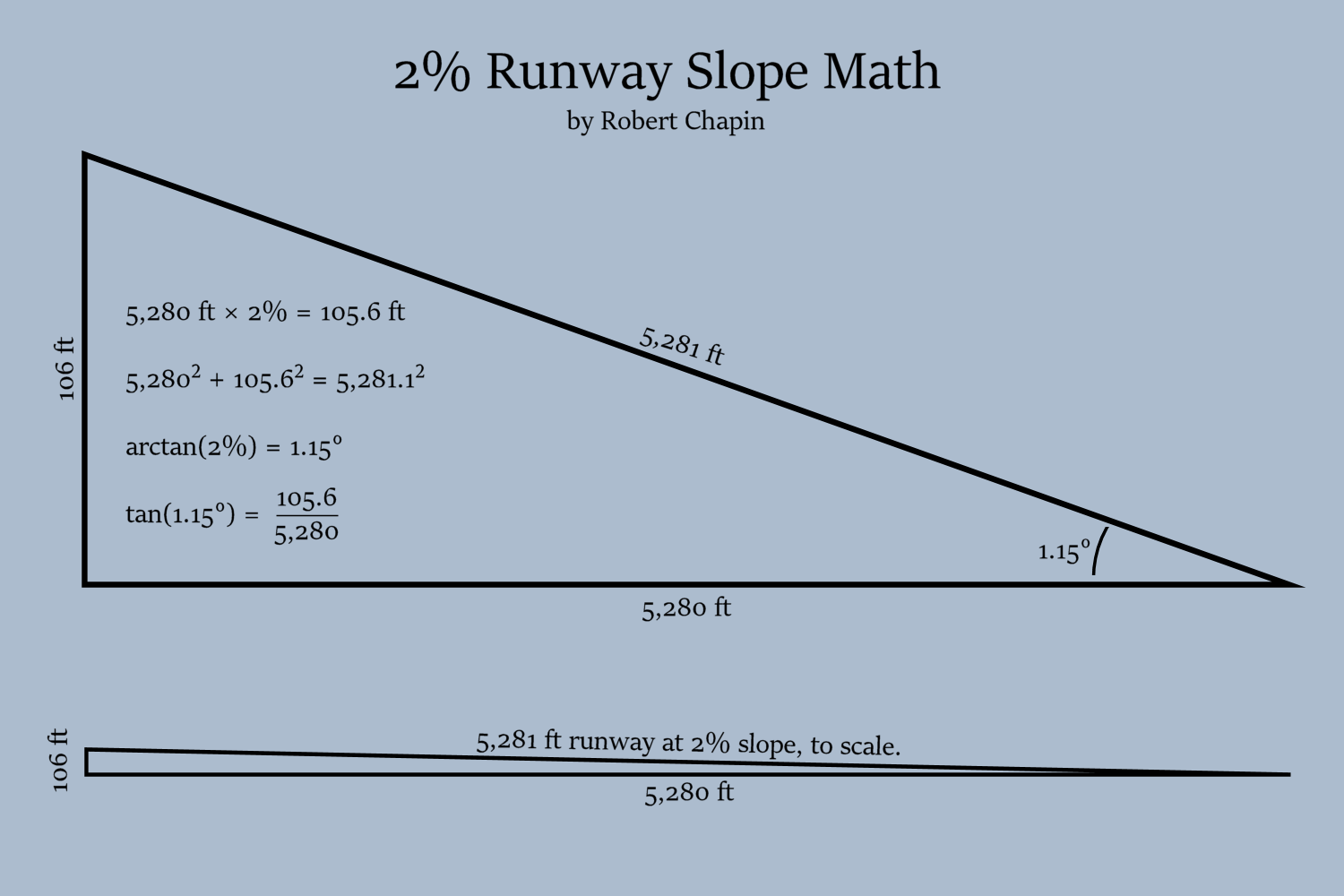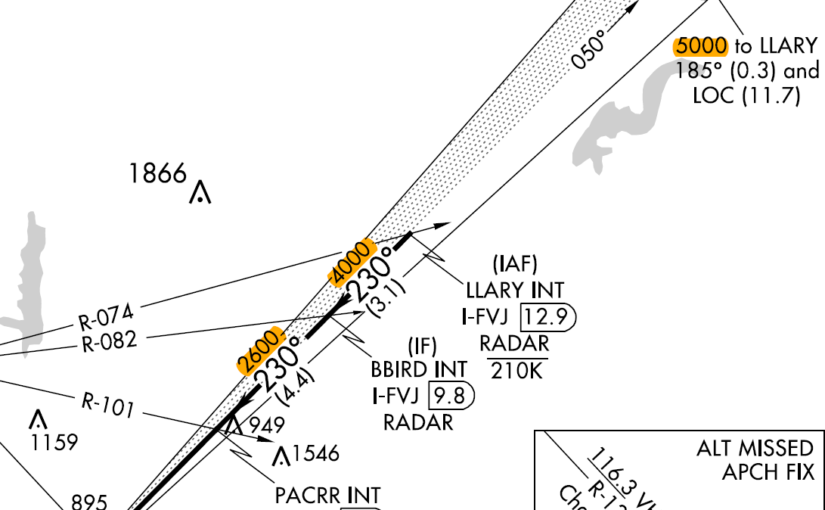-
Runway Slope Limitation

Here is a trivial nugget from an airplane manual. Among the operational limitations, the airplane’s maximum runway slope is 2%. Neato. What does it mean? I say “trivial” because folks working at airlines aren’t involved in measuring runway slopes. This topic truly reflects the work of diagramming airports, generating runway analyses, and automating performance calculations.…
-
Are We Established?

When the approach controller issues a clearance, “maintain 3,000 feet until established,” what does it mean to be established? The specific meaning of this phrase is a bit more involved than a short definition, and it is critically relevant in avoiding Controlled Flight Into Terrain (CFIT) accidents. Maintain the last altitude assigned by ATC until…
-
Flight Range Ring is Always a Circle
I found an interesting error in Flying Magazine today, in which the author described an airplane’s range as being “anywhere from a perfect circle to an egg shape based on the wind conditions.” Wrong! Remember, one should think in the most simple terms about the effect of wind on an airplane. Wind is just motion…
-
GPS Flight Planning – WAAS Going On?
It’s time to review the rules for planning an IFR flight with GPS navigation. Maybe the airplane has an old receiver without WAAS capability. Or maybe the rules have changed too many times to remember the current limitations. Where to find the answers? Destination Alternates – Without WAAS I’m starting with destination rules, because most…
-
Re-Thinking Risk Assessment
The best tool available for pilots to quantify overall flight risk is the form found in the FAA’s Personal and Weather Risk Assessment Guide. However, that form is more than 10 years old and needs many improvements. It is based on the “PAVE” method or checklist, and enables a pilot to assign a predetermined point…
-
Missed Approach Points in Jeppesen Charts
The M.A.P. Study Guide is a list of notes I first developed during instrument-flight-instructor training because I needed a concise explanation of various approach profiles. Now that I’m considering airline jobs, I’ve decided to adapt my study guide to the chart format used by Jeppesen, which is also used by many airlines. I find the missed approach…
-
Engine Failure with Runway Remaining
One of the most intimidating parts of flight training is the unlikely possibility that a single-engine training airplane could develop a single engine failure, thereby leaving no other engines available to help bring the airplane to a safe landing position. While engine failures and emergency procedures are widely discussed and practiced within the general aviation community, not…
-
Missed Approach Point Study Guide
The M.A.P. Study Guide is a list of notes I first developed during instrument-flight-instructor training because I needed a concise explanation of various approach profiles. Now that I am instructing instrument students, it seems this guide is the best tool for teaching missed approach identification with FAA charts. The Missed Approach Point and Missed Approach Track…
-
New Circling Procedures in Michigan
Starting with the current chart cycle from August 22, the radius of protected airspace for new circling approach procedures has increased. This change will mainly affect airplanes in approach categories B through D. While the procedures are flown in the same way, the requirements for a larger protected airspace may result in higher altitudes being…
-
CFIT Training Aid

Controlled Flight Into Terrain (CFIT) prevention is one of the main topics of Single-pilot Resource Management (SRM). As a pilot, I do want to avoid flying into terrain! I also enjoy studying any aspect of aviation. Sometimes this means tracking down an obscure publication, and I do enjoy that challenge as well. I found several…